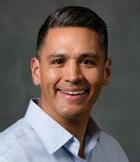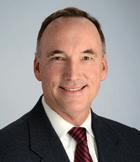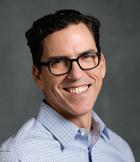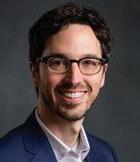




Early morning classes. Late night cram sessions. Much needed brain breaks. Midco® has you covered with unbeatable speeds. Phones. Tablets. Laptops. And more. Connect them all to our reliable, affordable fiber-based internet. No contracts or data caps.
Jean Teller / EDITOR
Shelly Bryant / ART DIRECTOR
Leslie Clugston Andres / COPY EDITOR
Alex Tatro / ADVERTISING DESIGNER
Joanne Morgan / ADVERTISING EXECUTIVE JMORGAN@SUNFLOWERPUB.COM
Bill Uhler / PUBLISHER
Bob Cucciniello / DIRECTOR
It’s that time of year … again. Summer winds down, and the school terms begin with many students anticipating both the end of long days of freedom and the excitement of new beginnings. It doesn’t matter if you’re starting kindergarten or graduate school; we all miss lazy summer days.
As we look forward to fall and to starting school, those students who walk the halls and hills of the University of Kansas have research to start, interviews to conduct, projects to ponder, and goals to achieved.
That’s what KU Today & Tomorrow is all about: Focusing on what’s happening on the Hill. Thanks to the KU News Service, we have a range of articles that will add to your own knowledge while increasing your appreciation for the KU folks who let their minds wander the universe.
Turn to page 12 for a real flight of the astronomy kind and discover an Earth-sized planet orbiting a star discovered by KU researchers. Then learn more about clean energy on page 26, or 5G wireless technology on page 6, or how fungi may help our growing plastic pollution dilemma on page 8.
Visit Garden City on page 14 and learn more about a film focused on pluralism — how to achieve it and what threatens it. Or discover the ways crowdfunding works — or doesn’t — on page 24.
Technology is at the heart of research to expand therapy options using virtual reality (page 16) and to help those struggling with eating disorders (page 22). We take a look at research focused on how those with disabilities are helped (or not) by federal surveys (page 20) and how talking with just one friend a day can boost our mood and our well-being (page 28).
Of course, we can’t forget sports, or more specifically basketball, when it comes to talking about the University of Kansas. A historical perspective on page 32 features the 1973–74 men’s basketball team and their successes and setbacks on the court. We’ve also included a full schedule for the KU football team and partial schedules for the men’s and women’s basketball teams; these are as up to date as we could make them before press time.
Please join me as we read about the work of KU’s talented cadre of researchers, all dedicated to exploring the outer reaches of our universe and the inner workings of the human mind. They all deserve recognition and accolades for their untiring pursuit of scientific excellence.
Here’s to KU!
Jean Teller Editor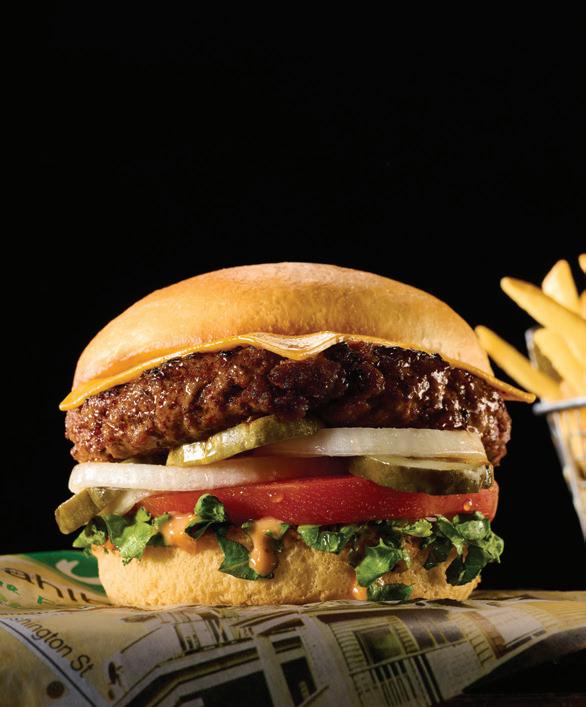
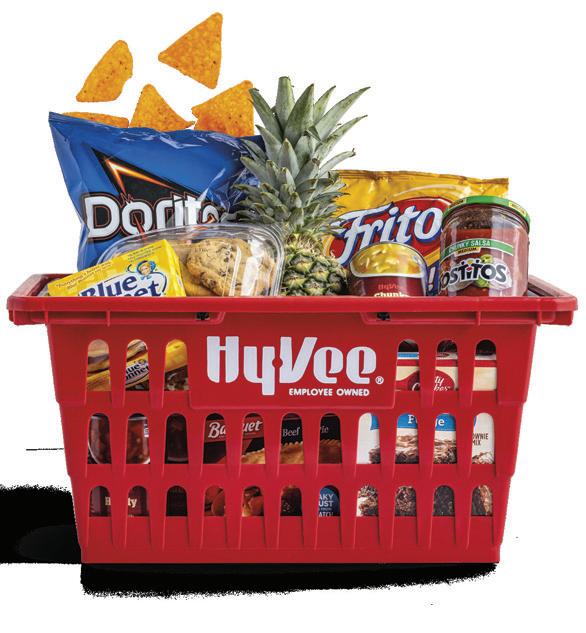
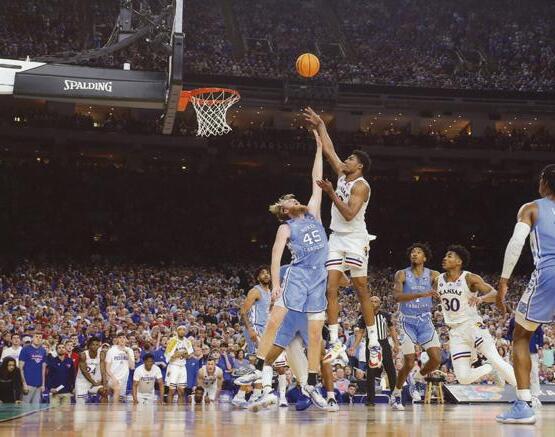
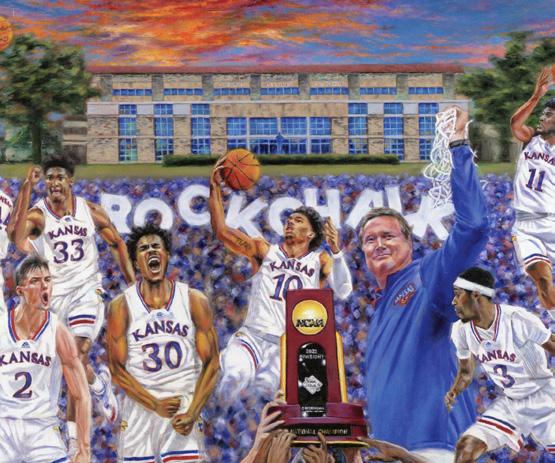

6 MORE 5G ACCESS
Researcher aims to boost rural access to 5G, harden wireless network security, and help conceive 6G.
8 FIGHTING POLLUTION WITH FUNGI
Using fungi, researchers convert ocean plastic into ingredients for drug industry.
12 VISITING LP 791-18
‘Potentially volcano-covered’ Earthsize planet found orbiting star first described by KU astronomer.
14 FILM’S TOPIC REMAINS RELEVANT
‘Garden City’ film shows what makes pluralism work and what threatens it.
16 GOING VIRTUAL FOR THERAPY
KU team develops virtual reality therapy system that aids clients, therapists with real-time brain data.
20 DISABILITY DILEMMA
Federal surveys missing as many as 43% of individuals with disabilities, KU study finds.
22 BETTER FOOD BEHAVIORS WITH TECHNOLOGY
New smartphone app helps students with eating disorders at KU, with potential for broader reach.
24 DOES CROWDFUNDING WORK?
Best strategies for designing crowdfunding campaigns revealed in new study.
26 SPLITTING MOLECULES FOR ENERGY
Scientists reveal breakthrough that could lead to cleaner hydrogen energy.
28
TALK TO FEEL BETTER
Just one quality conversation with a friend boosts daily well-being, study shows.
32
1973–74 JAYHAWKS WERE A TEAM
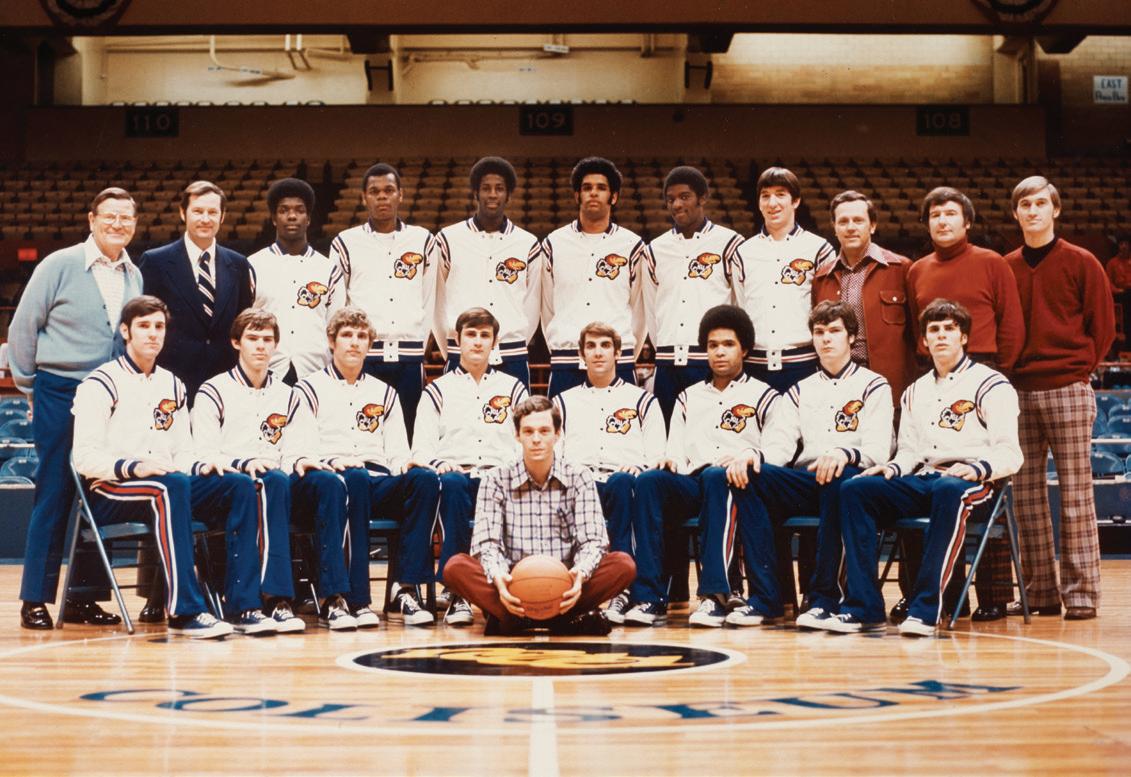
Coach Ted Owens and players planning a 50-year reunion to celebrate their time in the spotlight.
Big Jay struts along the sidelines during a 1996 football game. Photograph courtesy KU Libraries Digital Collections.
An official portrait of Kansas University’s 1973-74 men’s basketball team.LOOK CLOSELY at any mobile service provider’s map of nationwide 5G coverage, and you’ll notice huge swaths of the country — rural areas — don’t have 5G service.
A new three-year, $1 million grant from the National Science Foundation will support a University of Kansas researcher’s work to improve the design of 5G connectivity and computing for rural areas — communities with unique network demands based around agricultural and community patterns of living and working.
It’s one of a trio of new NSF-funded projects to be headed by Taejoon Kim, assistant professor of electrical engineering & computer science and researcher at the Institute for Information Sciences (I2S) at KU.

“The 5G network system was developed by companies with a profit motive,” Kim says. “Because of this economic incentive, all these 5G networks have been deployed in urban areas, but people living in rural areas still need to pay subscription for their cellphones, including for 5G service. But they haven’t benefited as much as people in urban areas — from the spread of information, the faster speeds, the ability to transfer large amounts of data that really transform our life at a different level.
“How can a company solve the problem in a way that allows them to produce more revenue?”
The KU researcher said a major hurdle in deploying 5G to rural communities has been “nonuniformity” in the spatial distribution of people as well as the demand for data on the network over time.
“In a city, the population is spread out in a way that is mostly uniform, but in rural areas you have a cluster of population there, another cluster there — that’s spatial nonuniformity,” Kim says.
Then there are needs of agriculture. Automated machinery, like combines controlled by GPS, are performing high-level computation and require a lot of communication.
ARTICLE BY Brendan M. Lynch, KU News Service“A huge amount of data must go to the cell tower and then the core network,” Kim says.
“They’ll also want to collect all those data to get statistics,” he says. “But this heavy data use only happens during harvesting time. That’s temporal nonuniformity.”
Kim and his team — KU EECS assistant professor Morteza Hashemi and collaborators from Purdue University – plan to streamline design of rural connectivity and computing, partnering with California-based commercial firm Blue Danube to run tests on a massive multiple-input multipleoutput (MIMO) platform — an advanced antenna technology for wireless communications. Kim and his colleagues will use machine learning to understand how 5G can be better deployed to meet rural spatial and temporal demands.
RIGHT
“What’s the main technological approach or hardware or software that will be different in a rural area than in urban areas?” Kim says. “Artificial intelligence can learn this complicated and nonuniform behavior.”
The group will explore using AI to learn uniform and nonuniform behaviors and will seek approaches tailored for rural areas. Kim said one idea is to focus 5G signals more like a beam at specific communities and agricultural operations rather than providing coverage throughout vast, mostly unpopulated regions to get service to a town or two.
Researcher aims to boost rural access to 5G, harden wireless network security, and help conceive 6G.Taejoon Kim, University of Kansas
“Because it’s nonuniform, it’s more efficient if we focus the energy to a specific direction,” Kim said.
In addition to re-imagining rural access to 5G, two additional NSF awards to Kim will enable him to harden commercial 5G networks for U.S. government, military and infrastructure operator use and develop technology for sixth-generation (6G) wireless technology.
Kim is the principal investigator for a yearlong $750,000 phase one award from the NSF’s Convergence Accelerator program to assist the Department of Defense with enhancements to end devices and augmentations to 5G infrastructure, providing capabilities to U.S. military, government, and infrastructure operators to operate through public 5G networks while meeting security and resilience needs.
“The key motivation for this project is the pursuit of ‘Zero Trust’ principles (an approach to designing information technology requiring all devices on a network to be verified) to combat design weaknesses of 5G networks, so we’ll integrate various security solutions to increase the level of trust of 5G,” Kim says.
A third NSF grant for three years and $285,000 will support Kim’s work helping define 6G wireless communications requirements, using artificial intelligence to design advanced wireless-network architecture for the microwave spectrum.
Kim says 5G can provide orders of magnitude improvement in speed, connectivity, and latency reduction. However, this improvement hasn’t come from work within the millimeter wave, part of the electromagnetic spectrum that has had limited research success in the U.S. Rather, a boost in network throughput has come from acquisition of new frequency bands and advances in massive MIMO technologies.
Instead of using today’s radio access network architecture, which depends heavily on cellphone towers, Kim will explore how to efficiently use large-scale cellfree massive multiple-input multipleoutput (CFmMIMO) networks.
“We must still be looking into using the neighborhood around 5 gigahertz — still microwave, but using a different architectural network,” Kim says.
The current cellphone network is based on all the cellphone towers designed to serve the user within that cell.

“There’s a new concept of ‘cell-free MIMO’ involves removing all the cell boundaries, but we’d have a very strong central unit that controls a massive number of distributed base stations as access points,” Kim said.
He said this work also would encompass cybersecurity aspects, strengthening the resilience of AI algorithms and architecture, as well as cloud radio access networks.

RESEARCH ON FUNGI underway at the University of Kansas has helped transform tough-to-recycle plastic waste from the Pacific Ocean into key components for making pharmaceuticals.
The chemical–biological approach for converting polyethylene uses an everyday soil fungus called Aspergillus nidulans that has been genetically altered. The results were reported recently in the paper “Conversion of Polyethylenes into Fungal Secondary Metabolites” published in Angewandte Chemie, a journal of the German Chemical Society.
“What we’ve done in this paper is to first digest polyethylenes using oxygen and some metal catalysts — things that are not particularly harmful or expensive — and this breaks the plastics into diacids,” says co-author Berl Oakley, Irving S. Johnson Distinguished Professor of Molecular Biology at KU.

Next, long chains of carbon atoms resulting from the decomposed plastics were fed to genetically modified Aspergillus fungi. The fungi, as designed, metabolized them into an array of pharmacologically active compounds, including commercially viable yields of asperbenzaldehyde, citreoviridin, and mutilin.
Unlike previous approaches, Oakley says the fungi digested the plastic products quickly, like “fast food.”
“The thing that’s different about this approach is it’s two things — it’s chemical, and it’s fungal,” he says. “But it’s also relatively fast. With a lot of these attempts, the fungus can digest the material, but it takes months because the plastics are so hard to break down. But this breaks the plastics down fast. Within a week you can have the final product.”
The KU researcher adds the new approach was “bizarrely” efficient.
“Of the mass of diacids that goes into the culture, 42% comes back as the final compound,” he says. “If our technique was a car, it would be doing 200 miles per hour, getting 60 miles per gallon, and would run on reclaimed cooking oil.”
Previously, Oakley has worked with corresponding author Clay Wang of the University of Southern California to produce about a hundred secondary metabolites of fungi for a variety of purposes.
“It turns out that fungi make a lot of chemical compounds, and they are useful to the fungus in that they inhibit the growth of other organisms — penicillin is the canonical example,” Oakley says. “These compounds aren’t required for the growth of the organism, but they help either protect it from, or compete with, other organisms.”
For a time, scientists thought they’d fully exploited the potential of fungi to produce these compounds. But Oakley says the age of genome sequencing has unlocked new possibilities for using secondary metabolites to benefit humanity and the environment.
“There was a realization there were lots and lots of clusters of genes that made secondary metabolites that nobody had discovered — and there are millions of species of fungi,” Oakley says. “A lot of companies have done good work over the years, but it was very much incomplete, because they were just growing things in the incubator and examining them for production of new compounds — but 95% of the gene clusters were just silent since they are not ‘turned on’ until needed. They weren’t doing anything. So, there are lots more things to discover.”
Oakley’s lab at KU has honed gene-targeting procedures to change the expression of genes in Aspergillus nidulans and other fungi, producing new compounds.
“We’ve sequenced the genomes of a bunch of fungi now, and we can recognize the signatures of groups of genes that make chemical compounds,” he says. “We can change the expression of genes; we can remove them from the genome; we can do all kinds of things to them. We could see there were lots of these secondary metabolite gene clusters there and our gene-targeting procedures allowed us, at least in principle, to turn some of those clusters on.”
Oakley and Wang’s co-authors were Chris Rabot, Yuhao Chen, Swati Bijlani, Yi-Ming Chiang, and Travis Williams of USC, and Elizabeth Oakley of KU.
The researchers focused on developing secondary metabolites to digest polyethylene plastics because those plastics are so hard to recycle. For this project, they harvested
polyethylenes from the Pacific Ocean that had collected in Catalina Harbor on Santa Catalina Island, California.

“There’ve been a lot of attempts to recycle plastic, and some of it is recycled,” Oakley says. “A lot of it is basically melted and spun into fabric and goes into various other plastic things. Polyethylenes are not recycled so much, even though they’re a major plastic.”
The KU investigator says the long-term goal of the research is to develop procedures to break down all plastics into products that can be used as food by fungi, eliminating the need to sort them during recycling. He adds the work is emblematic of KU’s Earth, Energy + Environment research

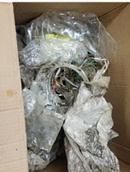
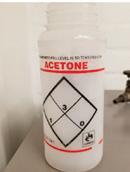
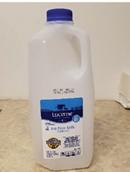
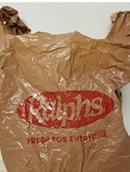

theme, geared toward “increasing understanding to help sustain the life of our planet and its inhabitants.”
“I think everybody knows that plastics are a problem,” Oakley says. “They’re accumulating in our environment. There’s a big area in the North Pacific where they tend to accumulate. But also you see plastic bags blowing around — they’re in the rivers and stuck in the trees. The squirrels around my house have even learned to line their nest with plastic bags. One thing that’s needed is to somehow get rid of the plastic economically, and if one can make something useful from it at a reasonable price, then that makes it more economically viable.”



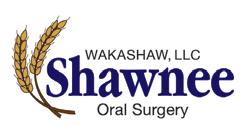

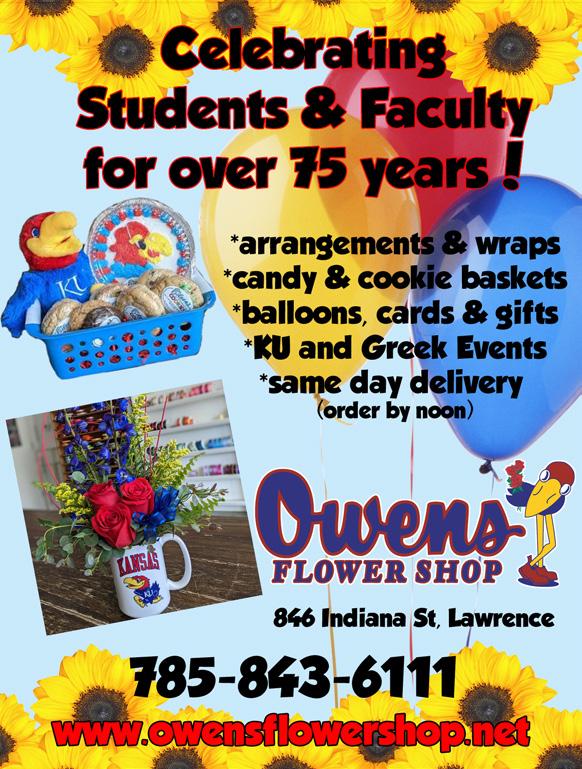
IT’S EARTH-SIZED, volcano-studded (possibly), and orbiting the cusp of a “habitable zone” around a star 90 light years away in a solar system first detailed by an astronomer at the University of Kansas. Meet LP 79118 d, a fascinating exoplanet circling a small red dwarf in the southern constellation Crater, described for the first time in the peer-reviewed journal Nature
But don’t book your flight quite yet.
According to co-author Ian Crossfield, associate professor of physics & astronomy at KU, the discovery of the exoplanet mostly tells us more about the inner workings of a system initially detailed in a 2019 paper where he served as lead author (as well as other systems like it).
“In this system, named LP 791-18 along with the star, the star is cooler and smaller than the sun,” Crossfield says. “It’s a system that was observed by NASA’s TESS Space Telescope a number of years back now. With TESS, we were able to identify that there were two planets in the system — LP 791-18 b and c. The system was interesting for a couple of
 ARTICLE BY Brenda M. Lynch KU News Service
ARTICLE BY Brenda M. Lynch KU News Service
‘Potentially volcanocovered’ Earth-size planet found orbiting star first described by KU astronomer.
reasons, partly because this was one of the smallest, coolest stars found to have planets of any kind. Most of the planets we know about are around stars like the sun. Also, these are easier to study in some ways. From the few other planetary systems we know about, these small, cool, red dwarfs sometimes are likely to host lots of planets.”
The new paper detailing LP 791-18 d relied on data from NASA’s Transiting Exoplanet Survey Satellite (TESS) and retired Spitzer Space Telescope, as well as a suite of ground-based observatories, and was led by Merrin Peterson, a graduate student at the Trottier Institute for Research on Exoplanets (iREx) based at the University of Montreal.
The researchers believe the freshly discovered planet “could see volcanic flare-ups about as frequently as Jupiter’s moon Io, the most volcanically volatile body in our solar system.”

According to NASA, the presence of volcanoes could suggest planetary habitability. But Crossfield resists the temptation to speculate whether such a planet could support life.
“The main discovery here is that we found a planet the size of Earth, much smaller than the planets b and c,” he says. “It’d be just a bit hotter than, say, the Earth is — or, at least it receives
more starlight from its star than we do from the sun. We don’t really know if it has an atmosphere, or if it has water, or if it has life, or if it could support life. We don’t know any of that.”
While some data suggest the scientifically exciting possibility that LP 791-18 d is a volcanically active planet, Crossfield says the idea remains hypothetical.
“We don’t know that there are any volcanoes here,” he says. “All we know is that this is a small planet that’s experiencing a straight-up periodic stretching due to its orbit around its star and near the other planets. That might cause lots of volcanoes like on Jupiter’s moon Io, which is the most volcanically active thing in our solar system. We know about that because we’ve sent things nearby and taken pictures. There’s not yet that kind of clear evidence yet with LP 791-18 d.”
Crossfield adds the planet was scientifically fascinating regardless of its volcanism or potential to host life.
“People study Jupiter still, but they don’t do it because they think there are aliens living there,” he says. “People study asteroids — just because we can and because we learn new things. Lots of exoplanet science is just about learning interesting things about the universe.”
Muslim immigrants in Garden City hold a prayer service on an outdoor basketball court to celebrate Eid al-Adha, marking the end of Ramadan, in 2017.


“Garden City is kind of unique as far as its size, its relative isolation and that it’s a majority minority ... nonEuropean-descent community,” Hurst says of the city of 25,000. “There are Mexicans and Somalis and their descendants from the Horn of Africa, Eritreans, Sudanese, people from Burma, Thailand, Vietnam. And then, you know, Central America, El Salvador, Honduras, Guatemala, and people from Cameroon. We met people from Haiti, from Cuba, from the subcontinent of India, and Europeans, too.”
The attraction for all the immigrants — including some from other parts of Kansas — is the Tyson beef-packing plant that employs about 4,500 people. Hurst toured it and found some archival footage of inside to show the grueling work done by the almost exclusively immigrant workforce.
And yet some, like the Three Percenters, resent the immigrants, going so far — long before the bomb plot — as to spy on them in hopes of ferreting out some nefarious deeds like drug dealing or human trafficking.
ARTICLE BYGARDEN CITY is something of a misnomer, sitting as it does on the parched high plains of southwest Kansas. But as the title of the new documentary by Robert Hurst, “Garden City, Kansas” serves as a metaphor.
“Garden City is a metaphor for ... a common goal. That’s what pluralism is,” says Hurst, associate professor of film & media studies at the University of Kansas. “You have differences, but you find commonalities to work toward. And if somebody has a different religion or a different diet, it’s not a threat to you.”
A fine sentiment. But it was a threat to that way of life — a conspiracy by a handful of would-be domestic terrorists to attack and kill Somali immigrants — that set Hurst’s film in motion, and it’s an inextricable part of an otherwise upbeat film, says the director. For more on the film, go to https://gardencityfilm.com
When news broke that the plot by an offshoot of a socalled “Three Percenter” militia group had been thwarted by federal law enforcement agents in October 2016, Hurst started sniffing around the story.
“There have been other stories, smaller films, made about Garden City, but none of them really had a national reach,” Hurst says. “So there were a lot of elements we took into consideration before we decided that we had something.
“It’s sort of like they want to attract people but then reserve the right to belittle them and mock their religions and suspect them for not being the same,” Hurst says.
And while the explication of the bomb plot takes up only a minority of the film, Hurst says it was necessary for the film’s dramatic arc.
At its heart, he says, the film is about what it takes to make pluralism work and what it takes to keep communities alive.
“It’s about the dynamic of immigration and how it’s not perfect,” Hurst says. “How do the people who are already there treat the people who are arriving in the city? What does it take to make their own lives work? To make the city work?”
Hurst says COVID-19 lockdowns threw a monkey wrench into the film’s development. But then it hit the film festival circuit, starting with the Kansas City FilmFest International in March and including Lawrence’s Free State Festival this summer.
“We were a little concerned that its relevance would fade if we got too far away from the event, but that doesn’t seem to be the case,” Hurst says. “Unfortunately I think it’s still really relevant. Three of the conspirators were deeply into alternative news sources and alternative facts and conspiracy theories. And that’s sort of mainstream at this point.”
For more on the conspiracy case, go to www.fbi.gov/ news/stories/three-sentenced-in-plot-to-bomb-somaliimmigrants-041219, and for more on the Three Percenters, find the entry on Wikipedia. Information on the KC Film Fest (kcfilmfest.org), and the Free State Festival (freestatefestival.org) can be found on the events’ websites.
‘Garden City’ film shows what makes pluralism work and what threatens it.
Rick Hellman, KU News Service
“Garden City is a metaphor for ... a common goal. That’s what pluralism is. You have differences, but you find commonalities to work toward. And if somebody has a different religion or a different diet, it’s not a threat to you.”
–Robert Hurst
CLIENTS SEEKING THERAPY need to feel comfortable in an environment that is conducive to examining mental health and with a counselor they can trust. Meeting those needs can be challenging in a remote therapy environment. A University of Kansas research team has developed a virtual therapy system that addresses many of the issues of remote counseling while also providing therapists with real-time data on brain activity.
ARTICLE BY Mike Krings, KU News Service
The EEG-enabled Virtual Therapy System has received a provisional patent and is being refined for wide market use. The system can take users to several virtual settings in which they meet with a counselor in the form of a VR wizard, Mother Earth figure, or other avatars. And recent clinical trials show that users have believed the virtual settings address many of the problems of remote counseling.


The system originated from a personal experience of Christopher Tacca, a recent doctoral graduate of KU. Just as he was starting his studies, a tragedy occurred.
“I remember celebrating graduation with my family and friends and being nervous about coming to Kansas and the Midwest,” Tacca says. “About a week later, one of my friends took his life. I didn’t know how to process it, but I felt like I wanted to do something that could help someone like him.”
A bioengineering student and Madison and Lila Self Graduate Fellow, Tacca was working with adviser Elizabeth Friis, professor of mechanical engineering. Friis introduced him to Barbara Kerr, Williamson Family Distinguished Professor of Counseling Psychology. Kerr had trained psychologists throughout her career and has used both virtual reality and EEG brain biofeedback in working with creative students and clients. The Virtual Therapy System originated from their discussions and was developed over the next few years as the team studied the technology and how it could be applied in psychological contexts.
KU team develops virtual reality therapy system that aids clients, therapists with real-time brain data.
“We really wanted to meet the needs of people who would use this. Much of that was from Dr. Kerr’s experience, but I also called a lot of therapists around Kansas to get their input and shadowed counselors doing what they do,” Tacca says. “We thought it was a cool idea, but we wanted it to be more than that. We wanted it to be useful and meaningful.”
The team recognized the need for a virtual setting conducive to therapy and discussing mental health, and current virtual therapy sometimes can come up short on providing that sense of security. The system also had to provide a “therapeutic alliance,” or way to build a trusting, meaningful relationship between the therapist and client.



The system features a choice of three virtual environments: a forest, log cabin, or a simulation of Sigmund Freud’s office. The forest features settings of nature such as trees, waterfalls, ponds, and even nature sounds, while the cabin features a fireplace and windows with scenic “outdoor” imagery. The office features large furniture, framed credentials, and bookshelves.
“One of the things that makes it restorative and comfortable is if people have control over the environment,” Tacca says. “So people can say, ‘I want to sit by this tree or pond.’ Nature is a place that’s very restorative, and people go there all the time. Here, people can also control sound elements like hearing a nearby waterfall.”
The office was modeled after Freud’s famous office, which Tacca and fellow students viewed on trips to Vienna, Austria, and Leipzig, Germany, as part of Kerr’s history and systems of psychology course.
Academic literature in topics ranging from psychology and neuroscience to anthropology informed the
development of avatars for counselors. Kaylie Ridgeway, Kerr’s doctoral student with a fine arts background, designed the avatars. Clients can choose which type of person they trust, and appropriate male, female, and nonbinary counselors voice the characters in real time.
“We can think of therapists as having various personality features, and we’ve found from cultures around the world people tend to trust certain figures as healers,” Kerr says. “So we have a ‘wizard’ or avatar that is a wise elder and a mother figure. And we’re also developing a ‘trickster’ humorous counselor and fantasy animal characters, because virtual reality doesn’t restrict us to human forms, and young people especially are familiar and comfortable with these types of figures from gaming and online experiences. In addition, there will be diversity of ethnicity of avatars.”
The system also provides data that clients cannot obtain through traditional remote sessions. The Virtual Therapy System is EEGequipped, which provides data on brain activity in real time. Clients wear a commercially available headband that places nodes on the forehead and monitors activity, similar to how a FitBit or similar device monitors physiological activity, Tacca says. That information can help therapists gauge how a client is feeling, if they are experiencing anxiety, or are struggling to process or discuss certain topics. Those feelings are more easily detected in person and can be addressed, but can be missed in remote settings.
“When Chris first came to me, I thought this was an ideal way to merge EEG technology with counseling work,” Kerr says. “We found it was very powerful for counselors to see the brainwaves of clients while working with them. It was a chance
for our doctoral students to learn a new way of experiencing what we’ve known for a long time about what makes therapy work, live a restorative environment.”

The Virtual Therapy System has received a provisional patent, and the KU Center for Technology Commercialization is in the process of acquiring a full patent. The goal is to make the system commercially available to any counseling professional. The research team has also conducted a series of studies on the system’s effectiveness from the counselor’s point of view and its results with clients comparing their experiences with counseling virtually and remotely through the Zoom platform. Users rated the virtual system more highly than counseling via Zoom in effectiveness and other factors.
Tacca has presented his findings at the Virtual Reality and Healthcare Global Symposium and the Institute of Electrical and Electronics Engineers Conference on Virtual Reality + 3D User Interfaces, and the studies are forthcoming in peer-reviewed journals as well.
The research team continues to refine the Virtual Therapy System. In the meantime, it has already proven effective in helping both clients and counselors in new ways.
“We always say the problem with virtual reality is you can’t see emotion,” Kerr says. “But our system makes that visible and solves a major problem of VR and allows deeper context for counselors to help clients.”


The Jayhawk Club has a wide-range of membership options for people of all ages. From our most popular Golf membership, which includes full access to the 18-hole championship golf course, to our Social membership, where you can enjoy the family-friendly, resort-style pool and exciting social calendar with events scheduled throughout the year; The Jayhawk Club has something for everyone.
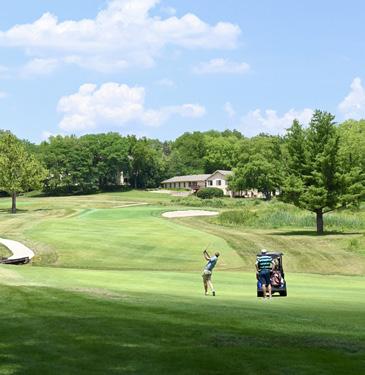
(785) 842-2929
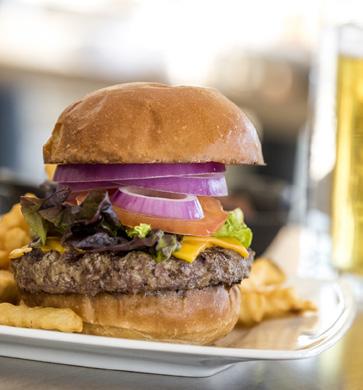
info@thejayhawkclub.com
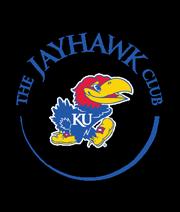
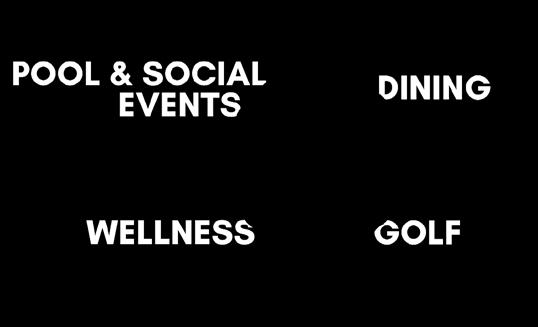
1809 Birde Way
Lawrence, KS 66047
“We always say the problem with virtual reality is you can’t see emotion. But our system makes that visible and solves a major problem of VR and allows deeper context for counselors to help clients.”
–Dr. Barbara Kerr


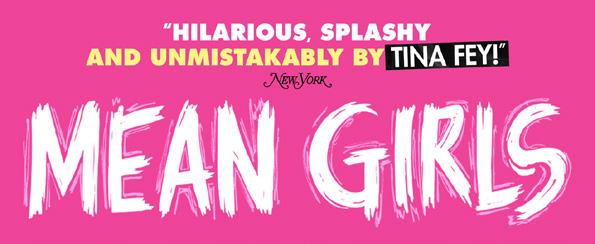

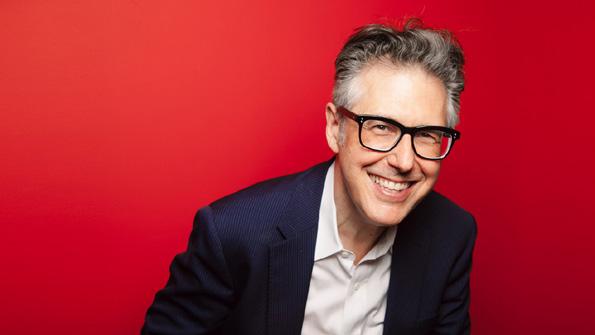
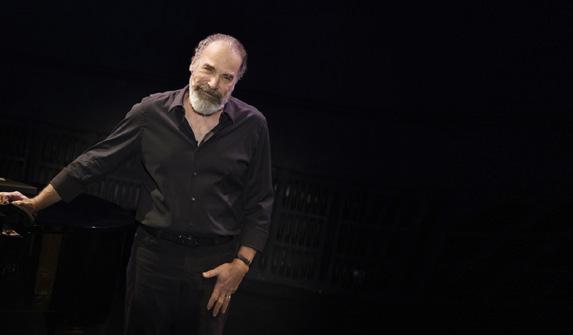
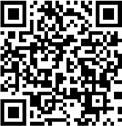
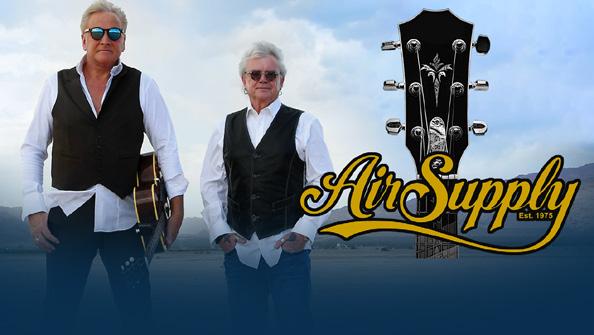


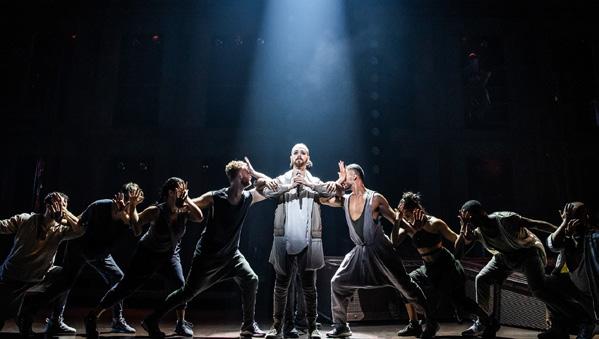


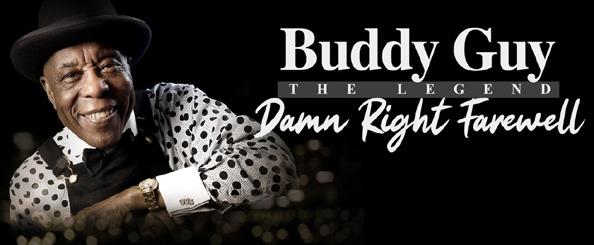


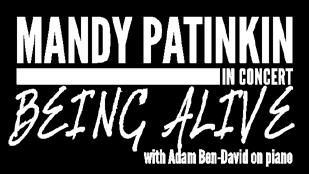
TO BETTER UNDERSTAND the prevalence of disability in the U.S. and to address health disparities, the Affordable Care Act mandated that federal health surveys collect data to identify people with disabilities. But new research from the University of Kansas has found that the two most common sets of disability questions used in federal surveys are missing as many as 43% of individuals who should be counted, especially those with psychiatric disabilities or chronic health conditions.
KU researchers conduct the National Survey on Health and Disability, known as the NSHD, which collects a broad range of information on disability, health, employment, and other factors. When they compared the results from that survey with responses to disability questions from the American Community Survey, or ACS6, and the Washington Group Short Set, known as WG-SS — the two most common disability question sets — they discovered gaps in how many people are missed as having a disability through the question sets compared to those same people who self-reported a disability. These gaps indicate that the amount of funds, services, and health care resources allotted for certain types of disability are likely not consistent with need and that such surveys and counts should be improved, the researchers say.
The study was written by Jean Hall, director of KU’s Institute for Health & Disability Policy Studies in the Life Span Institute; Noelle Kurth and Kelsey Goddard, research associates at the institute; and Catherine Ipsen and Andrew Myers of the University of Montana; and was published in the journal Health Affairs.
It was known prior to the study that some people with mental health disabilities and chronic conditions were overlooked by the ACS6 and WG-SS. The extent was not clear, however. When the research team compared results from the 2020 NSHD, they found that the two measures failed to identify 20% and 43%, respectively, of respondents

who reported a disability on other NSHD questions. The NSHD includes the ACS-6 and WG-SS questions but also asks individuals if they identify as having any physical or mental condition, impairment, or disability that affects daily activities and/or requires the use of special equipment or devices, and also how they classify their own disability.

“The ACS-6 is widely used in this country by federal and state agencies. What we know about disability in America largely comes from these questions,” Hall says. “The WG-SS is used more internationally but is still widely used in the U.S. We were able to categorize how people self-identify and categorize their own disability and how those results compared with the other commonly used measures.”
The ACS-6 asks yes or no questions about difficulty with certain functions or activities, while the WG-SS asks people the level of difficulty they experience in certain daily life activities due to their conditions. Neither question set is comprehensive to include all functions or activities that someone may have difficulty with, and neither question set asks about specific conditions experienced.
The measures produce both full and partial false negatives. Some individuals may be partially counted as having a disability — but not one that reflects their self-reported condition. Others are missed by the measures, noted as a full false negative.

“We argue that you’re identifying people as disabled but not categorizing them correctly with the type of disabilities they report, and because of that, probably not getting people the supports and services they need,” Hall says.
Further complicating matters is the COVID-19 pandemic, which has resulted in a sharp increase in the number of people with mental health disabilities across the country. Individuals also have experienced complications from long COVID-19, which can both exacerbate existing disabilities or present new ones. The study found that the two standard measures miss people with these conditions in the greatest numbers, further leading to undercounting.
Because the American disability population is large and growing, it is essential to have accurate numbers to improve policy, address risk, understand disability prevalence, and reduce adverse outcomes, the authors wrote. That can be addressed by including additional questions in federal surveys that ask:
• Whether the person has a mental or physical condition, impairment, or disability that affects daily activities and/ or requires use of equipment or technology.



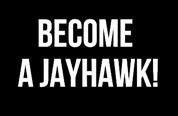
• What the condition or conditions are and which is the primary condition.
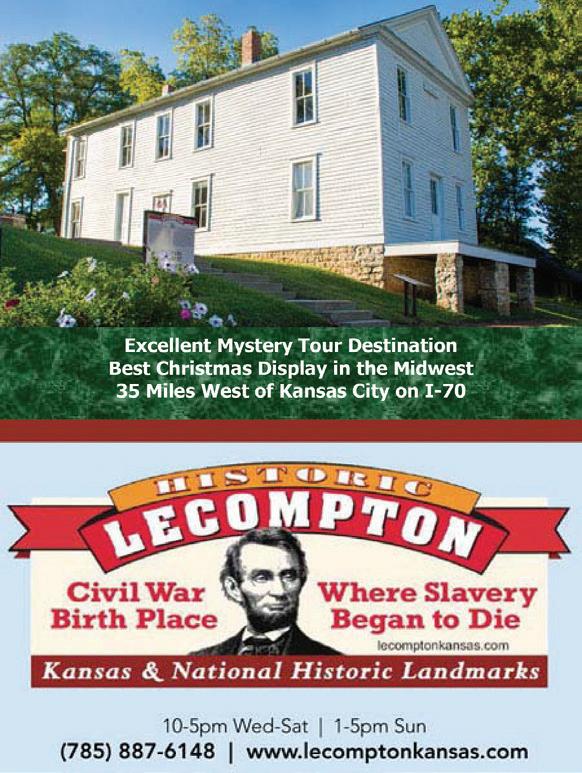

• Age of onset, duration, or expected duration of the condition.
“People with disabilities are the best at defining their own conditions,” Kurth says. “There is a rising tide of disability pride in the U.S. in the last 10 years as well, so obtaining the most accurate counts of disability is something worth talking about.”
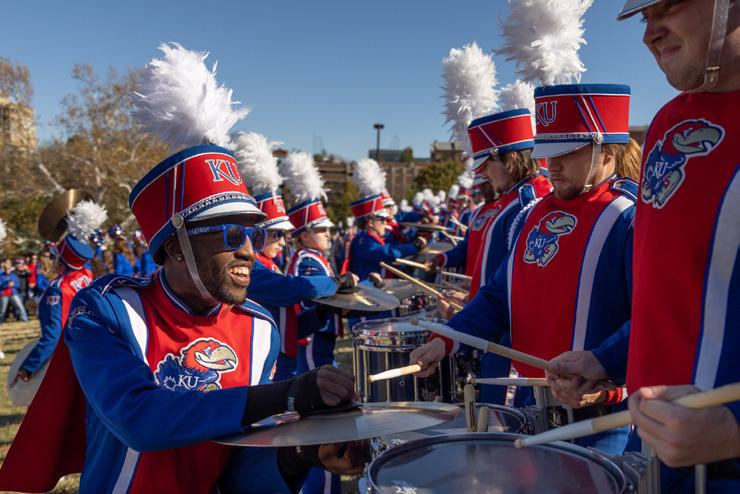
 ARTICLE BY Brendan M. Lynch, KU News Service
ARTICLE BY Brendan M. Lynch, KU News Service
Researchers at the University of Kansas are carrying out ongoing clinical trials of a promising new app that’s been shown already to help KU students living with an eating disorder, one of the deadliest mental illnesses. The BEST-U app’s user interface includes videos, interactive quizzes, short questions and surveys to track progress each week.
RESEARCHERS at the University of Kansas are carrying out ongoing clinical trials of a promising new app that’s already been shown to help KU students living with an eating disorder, one of the deadliest mental illnesses. With these encouraging initial results, the Building Healthy Eating and Self-Esteem Together for University Students, or “BEST-U,” app soon could be expanded beyond KU’s campus to other universities.
Kelsie Forbush is leading the project. She’s a professor of psychology, a senior scientist at KU’s Life Span Institute, and director of the CARE and COPE labs, which focus on researching and treating eating disorders, respectively. Forbush and her colleagues hope to assess whether the BEST-U app is effective for college students who face barriers to accessing care.
“People have difficulty getting treatment for their eating disorder and difficulty affording it,” Forbush says. “There really aren’t that many providers on college campuses who specialize in eating disorders, so often they refer students to the community. Here, for instance, there aren’t many providers in Lawrence, so they’ll refer to Kansas City. The issue is that waitlists are long and there are challenges with transportation.”
Forbush and her team wanted a scalable approach to address the high need that also was tailored to students.
“So, we did a long needs-based assessment, trying to figure out what would be a good fit for students and researching what’s already been done,” she says.
The psychology researchers settled on an evidence-based approach, guided selfhelp cognitive behavior therapy, to underpin their app. But they cut some of the timeconsuming workbook reading involved in traditional guided self-help CBT.
“I was very concerned students wouldn’t do it if we gave them another book,” Forbush says. “There are already so many books that they’re reading as students. I was influenced by research coming from the U.K. showing you could treat people with binge-spectrum eating disorders in as little as 12 weeks and get the same result as a full 20-week intervention. So the idea was to develop an intervention for college students that’s fully mobile, health-based, and takes lessons we give people in traditional CBT — but puts them in the app, makes them short, interactive, fun, and engaging.”

The BEST-U interface includes videos, interactive quizzes, short questions, and surveys to track progress each week. The app is paired with a trained BEST-U coach with whom participants meet for 25 to 30 minutes each week, either in-person or via telehealth.
“We were intent on creating a mobile, brief, powerful intervention,” Forbush says. “We wanted to meet college
students where they are, reduce barriers to access — if they can’t get to us because it’s difficult to get across campus, they can do the telehealth.”
Students are randomized to partake in the BEST-U intervention or a waitlist control, where they’ll participate in the research as control subjects while awaiting the subsequent 12-week intervention (less time than it takes to be evaluated at many treatment centers).
So far, data from the BEST-U intervention show significant declines in eating-disorder behaviors, according to the KU researcher.
“We found large reductions in binge eating and behaviors like purging and compulsive exercise,” Forbush says. “We found reductions in body dissatisfaction — they were happier with their body. Then, we also found reduced impairment such that they’re reporting better ability to engage with their family and friends and complete their academic responsibilities.”
What’s more, these positive changes from participation are still evident during the team’s three- and six-month follow-up sessions.
“I was so excited to see this short intervention is also a powerful one,” Forbush says. “At least for our six-month follow-up, it seems like they’re maintaining those benefits.”
With successful results already from the KU-based trial, the team currently is submitting scholarly papers for peer review, hoping to share findings with the broader research community. They’re also expanding the kinds of personnel who provide coaching by teaming up with medical providers at KU’s Watkins Health Services. Next, the investigators will apply for a larger grant to bring the BEST-U intervention to the University of Nevada-Las Vegas, where collaborator and former KU postdoctoral researcher Kara Christensen serves as an assistant professor of psychology. Past that, Forbush aims to see BEST-U available as widely as possible.
“My goal is really to scale up,” she says. “We could get this to many universities to address this gap in providers relative to need. A study recently showed the student-to-counselor ratio at many universities is 1,900-to-1. Eating disorders on college campuses have really increased since the pandemic, and people deserve to get care. It impacts their ability to function and achieve academically during college. Twelve weeks is not much time to help people get back on track. We think this is a scalable, impactful intervention.”
Students at KU interested in participating may contact cope@ku.edu or take the online eligibility survey.
Best strategies for designing crowdfunding campaigns revealed in new study.
ARTICLE BY Jon Niccum, KU News ServiceCrowdfunding platforms have financially leveled the field for those interested in launching a new product or backing a particular cause. These popular sites reportedly added $65 billion in revenue to the global economy in 2020.
“The crowdfunding model is an amazing way to raise funds because you are bypassing all the institutional infrastructure,” says Soudipta Chakraborty, assistant professor of business at the University of Kansas.
“There are no banks. No venture capitalists. You’re cutting out the middleman and raising funds directly from the end consumers of the product. So this is an amazing business model … but there are all these problems.”
Such problems led Chakraborty to write “Designing Rewards-Based Crowdfunding Campaigns for Strategic (but Distracted) Contributors.” The paper studies how to devise such campaigns when backers choose not only whether to contribute, but also when to contribute. It appears in Naval Research Logistics.
According to Chakraborty, who co-wrote the paper with Anyi Ma of Tulane University and Robert Swinney of Duke University, a typical crowdfunding campaign lasts around two months. Most see plenty of traffic right at the beginning because creators reach out to family, friends, and co-workers to secure pledges. Then comes a period of slow activity. This is sometimes followed by a “last-minute surge” before the deadline.
“Previously, people thought this surge happens because the contributors of the pledges are altruistic and want to see the creator and the campaign succeed. But we found it might not always be the case. This last-minute surge can happen due to people strategically withholding because they want to see if it’s going to get funded,” he says.
“If you think about it, there are not many reasons to withhold your pledges. On most sites, if your campaign doesn’t succeed, then the contributors get their money back. So there is almost no risk.”
What Chakraborty discovered was that seemingly small “frictions” for an individual contributor during the campaign often have a big influence on supporting the creator of the product. For instance, simply filling out credit card details can dissuade a potential funder, causing them to wait until weeks later or even not engage at all.
“We’ve come up with ways in which creators can overcome this problem of people waiting strategically,” he says.
“One way of doing that is using menus, where you have the same product but you charge different prices depending on when people are getting in. So there could be the same product sold at, say, $100. The first few individuals who decide to contribute will get this lower price. Anyone who decides to wait will have to get the same product at a higher price.”
Chakraborty’s team used a mathematical model to study what is called “equilibrium” in game theory. The researchers
set this up to where everyone – from the creator of the project to the target of the campaign – is acting in their own best interest, then verified the model using real-life experiments.
The professor first became drawn to this topic when he read a report stating only one in 10 crowdfunding platforms deliver the product that is promised. It remains one of many misconceptions people have about crowdfunding.
“Especially for rewards-based crowdfunding, the most misunderstood aspect is it’s like buying something on Amazon. ‘You can go on Amazon and press click and get something delivered to you.’ But that’s not what crowdfunding is. There is an inherent risk because you are investing in something that has not yet been developed. Kickstarter is not a store,” he says.
Now in his second year at KU, Chakraborty specializes in operations management. His primary research interest involves improving new business models.
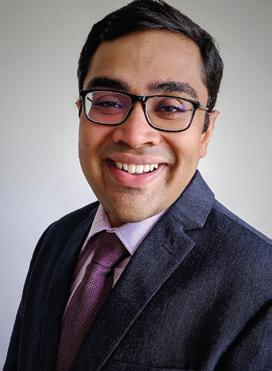
Chakraborty himself has invested in a Kickstarter campaign, which raised funds for a device that could remind drivers where they parked their vehicle.
“It was a really bad product,” he says. “Every time you’d stop at a red light, it would indicate that your car was parked.”
That experience further emphasizes the one-in-10 delivery statistic.
“There is an inherent risk to this business model,” Chakraborty says. “And sometimes sites allow all sorts of unscrupulous actors who will take advantage of that.”
One other discovery from his research may surprise those who are familiar with crowdfunding.
Chakraborty says, “Crowdfunding campaigns either fail miserably or they do well and succeed. But it almost never happens that the creator raises 80% of the target and then loses. It’s either only 20% of the target is raised or it’s fully funded. This in-between scenario is very rare. Our model can explain this observed quirk.”
“The crowdfunding model is an amazing way to raise funds because you are bypassing all the institutional infrastructure.”
–Soudipta Chakraborty, University of Kansas
 ARTICLE BY Brendan M. Lynch, KU News Service
ARTICLE BY Brendan M. Lynch, KU News Service
CHEMISTS at the University of Kansas and U.S. Department of Energy’s Brookhaven National Laboratory have taken a big step toward splitting hydrogen and oxygen molecules to make pure hydrogen — without using fossil fuels.
Results from pulse radiolysis experiments have laid bare the complete reaction mechanism for an important group of “water-splitting” catalysts. The KU and Brookhaven work means scientists are closer to making pure hydrogen from renewable energy, an energy source that could contribute to a greener future for the nation and world.
Their findings appeared recently in Proceedings of the National Academy of Sciences.
“Understanding how the chemical reactions that make clean fuels like hydrogen work is very challenging — this paper represents the culmination of a project that I started in my very first year at KU,” says co-author James Blakemore, associate professor of chemistry, whose research in Lawrence forms the basis of the discovery.
“Our paper presents data that were hard-won from specialized techniques to understand how a certain catalyst for hydrogen generation does the job,” he says.
“The techniques that were used both here at KU and Brookhaven are quite specialized. Implementing these allowed us to get a full picture of how to make hydrogen from its constituent parts, protons and electrons.”
Blakemore’s research at KU was the foundation of the breakthrough. He took his work to Brookhaven for research using pulse radiolysis, as well as other techniques, at their Accelerator Center for Energy Research. Brookhaven is one of only two places in the nation housing equipment that enables pulse radiolysis experiments.
“It’s very rare that you can get a complete understanding of a full catalytic cycle,” says Brookhaven chemist Dmitry Polyansky, a co-author of the paper. “These reactions go through many steps, some of which are very fast and cannot be easily observed.”
Blakemore and his collaborators made the discovery by studying a catalyst that is based on a pentamethylcyclopentadienyl rhodium complex, which is [Cp*Rh] for short. They focused on the Cp* (pronounced C-P-“star”) ligand paired with the rare metal rhodium because of hints from prior work showing that this combination would be suitable for the work.
“Our rhodium system turned out to be a good target for the pulse radiolysis,” Blakemore says. “The Cp* ligands, as they’re called, are familiar to most organometallic chemists, and really chemists of all stripes. They’re used to support many catalysts and can stabilize a variety of species involved in catalytic cycles. One key finding of this paper gives fresh insight into how the Cp* ligand can be intimately involved in the chemistry of hydrogen evolution.”
But Blakemore stresses the findings could lead to other improved chemical processes besides producing clean hydrogen.

“In our work, we hope that chemists will see a study about how a common ligand, Cp*, can enable unusual reactivity,” the KU researcher says. “This unusual reactivity is relevant to the hydrogen story, but it’s actually bigger than this because Cp* is found in so many different catalysts. Chemists normally think of catalysts as being based on metals. In this way of thinking, if you’re making a new molecule, the metal is the key actor that brings the constituent parts together. Our paper shows that this isn’t always the case. Cp* can be involved in stitching the pieces together to form products.”
Blakemore says he hopes this paper could be an opening that leads to improvements in other catalysts and systems that rely on Cp* ligands. The breakthrough, which was supported by the National Science Foundation and the DOE Office of Science, could apply more broadly to industrial chemistry. Blakemore is now working on applying techniques like those used in this work to the development of new approaches to recycling of nuclear fuels and handling of actinide species.
KU students at the graduate and undergraduate levels also were involved in research that underpinned the breakthrough.
“This project was a very important training vehicle for students,” Blakemore says. “Graduate student Wade Henke, the first author, is now at Argonne National Laboratory as a postdoc. Graduate student Yun Peng is the second author and kicked off the joint work with Brookhaven; both have now finished their Ph.D.s. Undergraduates also contributed to this project over the years, providing new complexes and insights that we used to frame the story that emerged in this paper.
“All in all, I consider this a successful project and one that was a real team effort over the years.”
PHOTOGRAPHS Alexander Limbach, Adobe Stock/malp“It’s very rare that you can get a complete understanding of a full catalytic cycle.
These reactions go through many steps, some of which are very fast and cannot be easily observed.”
–Dmitry Polyansky, Brookhaven National Laboratory
Just one quality conversation with a friend boosts daily well-being, study shows.
 ARTICLE BY Rick Hellman, KU News Service
ARTICLE BY Rick Hellman, KU News Service
CONVERSING with a friend just once during the day to catch up, joke around, or tell them you’re thinking of them can increase your happiness and lower your stress level by day’s end.
These are among the results of a new study co-written by Jeffrey Hall, University of Kansas professor of communication studies and friendship expert.
“Quality Conversation Can Increase Daily Well-Being” was published in the journal Communication Research by Hall and co-authors Amanda Holmstrom, Natalie Pennington, Evan Perrault, and Daniel Totzkay. The study was informed by and provides further support for Hall’s Communicate Bond Belong (CBB) theory of relationships. Hall is the director of KU’s Relationships and Technology Lab.
“This paper was an attempt to define quality communication in the context of relationships,” Hall says. “The types of communication we chose to study were ones shown in past research to make people feel more bonded through conversation.”
They studied seven types of communication:
• Catching up
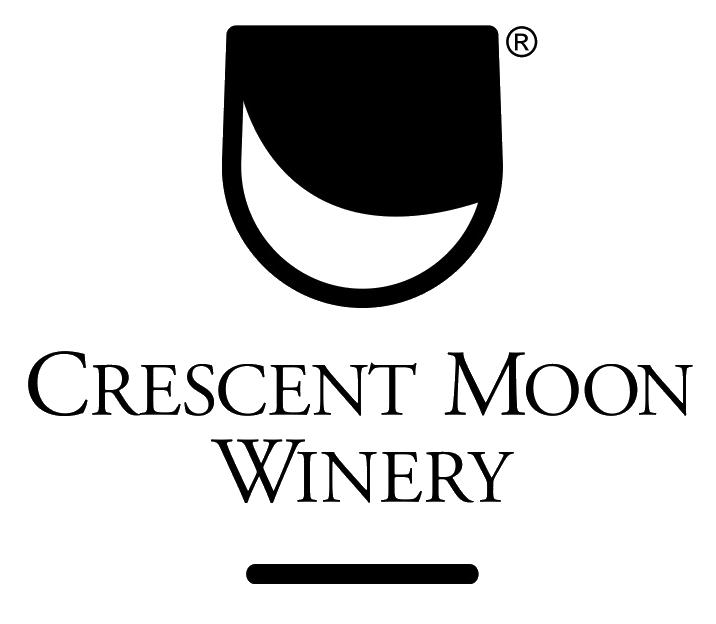
• Meaningful talk
• Joking around
• Showing care
• Listening
• Valuing others and their opinions
• Offering sincere compliments
Over 900 study participants from five university campuses — before, during, and after pandemic lockdowns — were directed to engage in one of the seven communication behaviors on a single day, then report back that night about their feelings of stress, connection, anxiety, well-being, loneliness, and the quality of their day.
As it turned out, Hall says, it didn’t matter which of these quality conversations someone had. The very act of intentionally reaching out to a friend in one of these ways was what mattered most.
“One of the take-home messages of this study is that there are many paths toward the same goal,” Hall says.

He says the study also was designed to explore the effects of both the quality and quantity of daily communications.
“There’s a lot of good research that says the number of interactions you have as well as the quality of interactions are both associated with being a less lonely, happier, and more connected person,” Hall says.
This study found that once is enough, but more is better. Participants who chose to have more quality conversations had better days.
“This means the more that you listened to your friends, the more that you showed care, the more that you took time to value others’ opinions, the better you felt at the end of the day,” he says.
“The experimental design means that it’s not just people who are already having fulfilling lives who have higherquality conversations,” Hall says. “This study suggests that anyone who makes time for high-quality conversation can improve their well-being. We can change how we feel on any given day through communication. Just once is all it takes.”
The study also brought in Hall’s past research on different ways to connect in the era of social and mobile media. The study found high-quality, face-to-face communication was more closely associated with well-being than electronic or social media contact.
“If at least one of their quality conversations was face-toface, that mattered,” Hall says.
The paper also explains why quality communication makes people feel better. CBB theory claims that people use conversations with friends to help meet their need to belong.
“Across these three studies, quality conversation mattered most for connection and stress,” Hall says. “This supports the idea that we use communication to get our need to belong met, and, in doing so, it helps us manage our stress.”
What is exciting about this research, Hall says, is that it shows there are a host of good things that come along with just one good conversation with a friend. This drives home the point that making time for quality conversation makes our days better.



were a
Coach Ted Owens and players planning a 50-year reunion to celebrate their time in the spotlight.
BY David
ARTICLE GarfieldOn a beautiful On a beautiful




Dale Greenlee has finished playing nine holes of golf (two birdies) with his daughter, Julie, who’s visiting from Atlanta. He’s looking forward to his 70th birthday in a couple of weeks.
Greenlee, branch manager in industrial sales for FCX Performance, treasures Julie’s birthday gift — an autographed basketball of NBA legend Julius Erving — as he thinks back 50 years ago and reflects on his 1973–74 Kansas basketball Final Four team (23–7). He and his teammates staged the most dramatic comeback in school annals and one of the biggest turnarounds from the previous season (8–18 in 1972–73) in NCAA history. The 1973–74 team was the first team in 23 years to earn a Final Four berth after a losing season.
“It seems like yesterday, especially when the NCAA Tournament starts,” Greenlee says. “It’s like it’s been a few years; the memories keep flooding back. I see Kansas playing in the tournament and think, ‘Oh my gosh, it wasn’t that long ago we were there, but it was.’ It makes you feel young when you watch KU. I think (Coach) Bill Self could put me in and maybe I could get one shot. I couldn’t guard anyone anymore.”
Greenlee, one of the fiercest competitors in KU history and once called the league’s “best pure shooter,” was a sophomore in 1972–73, playing on the team that lost every close game — a “season of challenges.”
The returnees completely “redoubled our dedication in the offseason ... to become a better basketball player,” and the “effort and quality of play in practice was better.”
With the top four scorers returning and the additions of sweet-shooting 6-foot-6 community college transfer Roger Morningstar and 6-foot-9 high school star Norm Cook, KU was still picked by area media to finish fifth or worse in the Big Eight.
KU coach Ted Owens, now 93, was named Big 8 Coach of the Year five times during his tenure at KU. He started senior co-captain Tom Kivisto and Greenlee as guards, Morningstar and Cook as forwards, and junior center Danny Knight, with “Super Subs” 6-foot-10 Rick Suttle (team high scorer in conference play) and 6-foot-4 Tommie Smith, who all gave instand spark when they rotated into play.
“The Comeback Kids” first routed Murray State, 103–71, during which Cook (Big 8 Freshman of the Year) had a magical freshman debut with 21 points (10–10 FG); then the team won a huge home battle with No. 10 Kentucky, 71–63.
“That was critical to our confidence,” Greenlee says. “We’re thinking, ‘We can play with anybody.’”
After next losing at No. 3 Indiana, Greenlee says, “We played pretty well (going forward).” However, after losing
to Colorado, 73–71, on December 26, 1973 — KU’s second straight loss — Kivisto told John Hendel in his 1991 book, Kansas Jayhawks: History-making Basketball, that doubt crept in and he called a team meeting.
“We decided we’re going to go with some kids … who worked hard … (and) have a little bit of fun,” Kivisto said at the time.
KU won 14 of the next 16 games, including a pivotal 72–71 win at Iowa on January 2, 1974. Kansas (0–7 in road games the previous season) finally won a close road game and against a Big Ten foe.
“This game made our season,” Kivisto said. He was an All-Big 8 and Academic All-American that year.
The close wins and tremendous team chemistry continued with five players averaging in double figures for the first time in school history. Knight was the team high scorer at 12.4 points per game. Kivisto, a prep All-American, was the consummate leader who sacrificed scoring to help everyone.
“Tom was our most valuable player,” Greenlee says, “… and never happier when giving an assist.”
Playing on a “team without a star,” Greenlee remembers that “nobody cared who scored. We played like brothers. We were really a tight group, watched out, and cared about each other. We hung out off the court, my comrades in arms. You worked, practiced, traveled with, that’s a lifetime experience.”
Greenlee has warm memories of living with teammates at Jayhawker Towers, attending KU football games, and visiting the homes of Owens and assistants Sam Miranda and Duncan Reid. The coaches viewed the team as “family.”
On March 6, at Allen Fieldhouse, in what the Wichita Eagle termed the “The Game of the Year,” KU beat K-State, 60–55, clinching the Big Eight title. Students stormed the court, the KU team cut down the nets, and the players were carried off the court.
“We’ve won a lot of championships, but this means more than any we’ve ever had,” Owens said in the jubilant locker room.
“We went up on the Hill afterwards,” Greenlee says, where 7,000 fans celebrated at midnight. “Nobody wanted to sleep. It felt as if you almost won the national championship because you had to win the conference to get into the NCAA Tournament.”
The best was just beginning.
After KU beat Creighton, 55–54, in Tulsa during the Jayhawks’ opening game (they received a bye for the first round), the Kansas team went up against the high-scoring Oral Roberts squad for the Midwest Regional title on ORU’s
home court, the Mabee Center, which remains “The Game” in Tulsa.
ORU led 81–74 with 3:19 left. The Jayhawks scored the last seven points to tie the game in regulation and went on to win 93–90 in overtime.
“We had a season when we’d come back a lot,” Greenlee says. “I’ll never forget the timeouts. I’d look at Kivisto. He’d look at me, we’d look at Roger, and Rick and Norm. We figured we’d do what we had to do to get back in it.”
The Jayhawks were overjoyed afterwards. Owens called the victory against a great team on its homecourt the “gutsiest thing I’ve ever seen.”
“You’ve climbed the next mountain,” Greenlee says now. “The first mountain was winning the conference. (Now) you’re standing at the peak of the mountain and ... moving on to the Final Four.”
In the 1991 Hendel book, Kivisto said, “It was as talented Final Four group, with the exception of our team, as there ever was in a Final Four.” The rosters of the Final Four teams included numerous future first-round NBA picks as well as future hall of famers Bill Walton and David Thompson. The Final Four wasn’t near the huge media event it is today, so there was just a small sign at the Holiday Inn at Greensboro, North Carolina, where the Jayhawks were staying, that read, “Welcome, Kansas Jayhawks.”
On March 23, No. 6 KU played No. 3 Marquette in the undercard game in Greensboro while No. 1 N.C. State took on No. 2 UCLA in what was billed the “Dream Game.”
“We were thrilled to be there,” Greenlee says. Newspaper headlines used “Mystery Team” to describe Kansas.
After KU led 24–23 at halftime, Marquette coach Al McGuire directed his players to a full-court press on Kivisto and Kansas lost 64–51. In the 1991 book, Owens said, “We did not have a lot of other ballhandlers except Tom Kivisto, so what they did was fullcourt pressed him and trapped him. It was good strategy on their part. They trapped him and took the ball out of his hands and put the press of ball handling on other people …”
The Jayhawks fell against UCLA in the consolation game, 78–61, after leading by eight points at halftime.
Even with both losses, the KU players felt immense pride. Owens said later, “This team probably gave as many thrills and excitement in the great history of Kansas basketball. It was this kind of unity, spirit, and togetherness which made us such a great team.”
The Brotherhood
Greenlee says the team’s brotherhood remains strong.
“Definitely for life,” he says. “That’s not something that changes.”
The squad regularly comes back for reunions and is planning a 50-year reunion in Lawrence this season. Greenlee talks to his close friend Morningstar every week and regularly speaks to other former teammates on a regular basis. He also keeps in touch with Owens. He says his former roommate Tommie Smith still calls him “roomie,” and the team has a group text.
“You slide right back into the relationships (at reunions),” Greenlee says. “There’s that feeling of joy, warmth, the hugs. You’re right back where you were in 1974.”
Greenlee can’t hold back his emotions when expressing what that miracle comeback season 50 years ago meant to him and his lifetime “brothers.”
“It was one of the greatest moments of my life,” he says. “I believe we had as good a group of guys that ever wore Kansas on their chests. I’m proud to have been part of that group.”



 Clockwise from top left Roger Morningstar (30) controls the ball; Norman Cook (32) on guard; Coach Ted Owens in his office; Owens on the court.
Clockwise from top left Roger Morningstar (30) controls the ball; Norman Cook (32) on guard; Coach Ted Owens in his office; Owens on the court.
DATE OPPONENT SITE (ARENA)
Oct. 6 Late Night in the Phog Allen Fieldhouse
Nov. 1 FORT HAYS STATE (EXH) Allen Fieldhouse
Nov. 6 NORTH CAROLINA CENTRAL Allen Fieldhouse
Nov. 10 MANHATTAN Allen Fieldhouse
Nov. 14 Kentucky # Chicago, Ill. (United Center)
Nov. 20 Chaminade Maui, Hawaii (Lahaina Civic Center)
Nov. 21 TBD % Maui, Hawaii (Lahaina Civic Center)
Nov. 22 TBD % Maui, Hawaii (Lahaina Civic Center)
Nov. 28 EASTERN ILLINOIS Allen Fieldhouse
Dec. 1 CONNECTICUT ~ Allen Fieldhouse
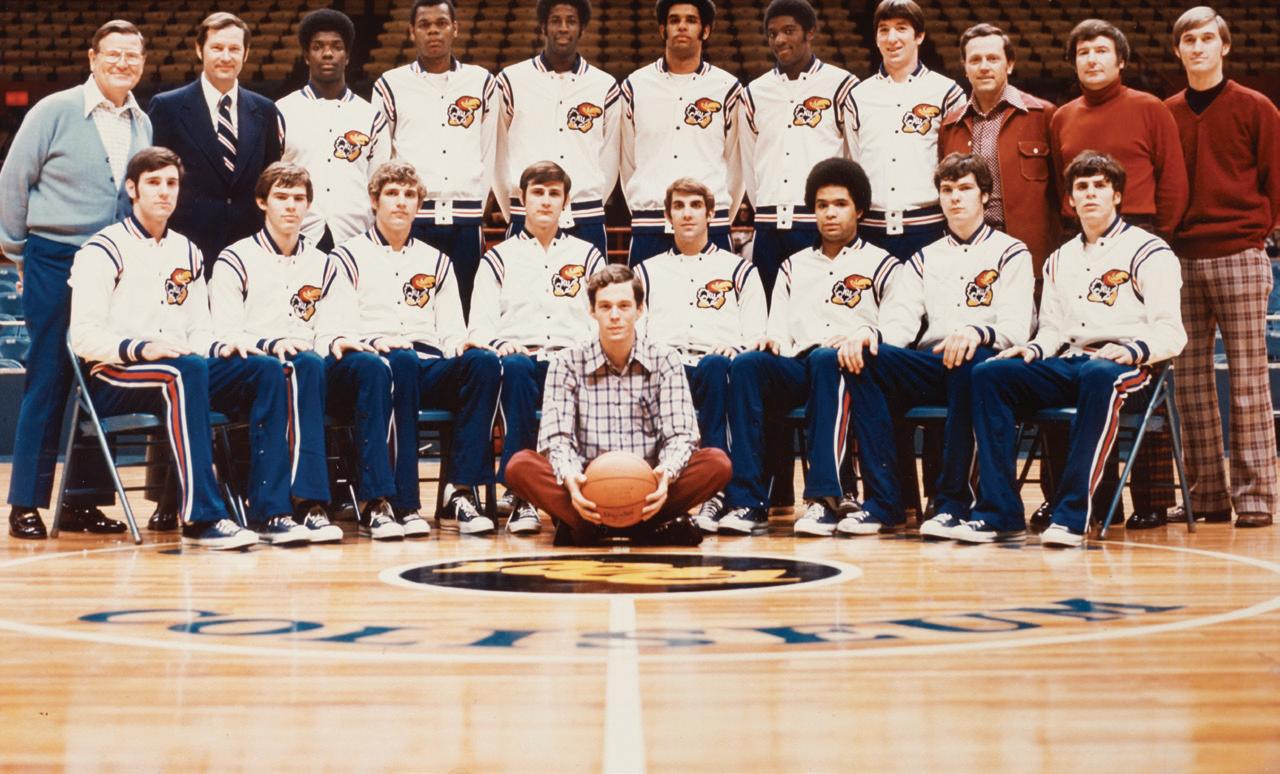
Dec. 5 KANSAS CITY Allen Fieldhouse
Dec. 9 MISSOURI Allen Fieldhouse
Dec. 16 @ Indiana Bloomington, Ind. (Simon Skjodt Assembly Hall)
Dec. 22 YALE Allen Fieldhouse
Dec. 30 Wichita State Kansas City, Mo. (T-Mobile Center)
PHILLIPS 66 BIG 12 CHAMPIONSHIP
March 13 First Round Kansas City, Mo. (T-Mobile Center)
March 14 Quarterfinals Kansas City, Mo. (T-Mobile Center)
March 15 Semifinals Kansas City, Mo. (T-Mobile Center)
March 16 Final Kansas City, Mo. (T-Mobile Center)
NCAA CHAMPIONSHIP
March 17 Selection Sunday
March 19/10 First Four UD Arena (Dayton, Ohio)
March 21/23
March 22/24
First/Second Rounds

First/Second Rounds
Spectrum Center (Charlotte, N.C.); CHI Health Center (Omaha, Neb.); PPG Paints Arena (Pittsburgh); Vivint Smart Home Arena (Salt Lake City)
Barclays Center (Brooklyn, N.Y.); Gainbridge Fieldhouse (Indianapolis); Spokane Veterans Memorial Arena (Spokane, Wash.); FedExForum (Memphis, Tenn.)
March 28/30 Regionals TD Garden (Boston); Crypto.com Arena (Los Angeles)
March 29/31 Regionals American Airlines Center (Dallas); Little Caesars Arena (Detroit)
April 6 Final Four State Farm Stadium (Glendale, Ariz.)
April 8 National Championship State Farm Stadium (Glendale, Ariz.)
2023 Maui Invitational field: KANSAS, Chaminade, Gonzaga, Marquette, Purdue, Syracuse, Tennessee, UCLA
# State Farm Champions Classic | % Maui Jim Maui Invitational | ~Big EASTBig 12 Battle | * Big 12 Conference game | Home Games in ALL CAPS






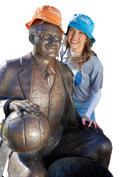
Not just any champion – every champion. From competitive athletes to weekend warriors and those who just like to stay fit by staying active, the sports medicine experts of Kansas Sports Medicine will keep you moving forward. Our board-certified physicians, physician assistants, physical therapists and sports performance specialists are ready to help you overcome injuries and reach the top of your game.
